The Apple iPad Air 2 Review
by Joshua Ho on November 7, 2014 9:30 AM EST- Posted in
- Tablets
- Apple
- Mobile
- iOS
- ipad Air 2
Software: iOS 8
While hardware is important, the tablet ultimately needs compelling software in order to justify its place. Apple has done a great job of using the display’s extra real estate, although areas like Springboard are a bit lacking in information density when compared to the iPhone 6 Plus. Unlike the iPhone 6 Plus which usually only gives a multiple-pane view in landscape, the iPad can present more information all the time. While this may seem to be an artificial distinction, it’s really the 4:3 aspect ratio that improves information density for both orientations.
More notably, applications in the app store seem to be universally adapted for the iPad instead of being a stretched out iPhone version. It’s likely that this is because any iPhone-only application is a direct scaling rather than any proper interpolation, so at 1x mode the application is comically small and at 2x the application often looks horrific due to aliasing and upscaling artifacts. Both modes leave large levels of unused space in the display, so there’s a strong impetus to make a proper tablet application. The multitasking gestures continue to add to the tablet's functionality as well, which can be even quicker than normal multitasking. This is also helped by the use of two gigabytes of RAM, which noticeably reduces the amount of times that applications are kicked out of memory in my experience. As AArch64 can increase memory requirements it seems important for future iPhones and iPads to all ship with at least two gigabytes of RAM.
For the most part, these are already advantages that iPads have had for a while, so none of this really changes when compared to most other tablets, which have generally suffered from a relatively poor breadth of applications designed to take advantage of a larger tablet display. The one significant software feature to talk about here is TouchID, even though this is a hardware-driven feature. Similar to my experiences with TouchID on the iPhone, TouchID on the iPad makes a lot of sense. While there’s no NFC feature for Apple Pay, the same system works for online purchases which has a great deal of potential for any applications that utilize Apple Pay. The launch of iOS 8 also means that TouchID can be used as an alternate form of authentication for any application that uses the appropriate API, which is definitely nice as well. Of course, for basic unlock this system continues to work incredibly well, to the point where it’s often possible to accidentally unlock the device when turning it on with the home button.
However, there’s not much else to talk about. Unfortunately, while Apple has done a good job of developing the tablet it feels like there’s a lot of potential for new applications and other usage models that haven’t come to fruition. While the stylus is often seen as a negative for user experience, I suspect that the iPad would have for more value if a good pressure-sensitive stylus was included for note-taking and similar use cases. In addition, the lack of a proper multi-window system definitely detracts from the potential for the iPad to take on a productivity role. While these are all things that Samsung has done for the Galaxy Note line, these features aren’t really as well executed as they need to be for good user experience which leaves room for Apple to innovate in this area. It seems fully possible for an iPad to replace a ~20 mm thick convertible tablet for productivity and note taking, but proper development of these ideas hasn’t quite happened.
Unfortunately, as a function of the iPad’s size I find it hard to integrate into daily use. For the most part I don’t find myself missing the extra screen size when compared to a phablet like the iPhone 6 Plus, and this is likely to be Apple’s biggest issue as the iPhone 6 Plus can give much of the tablet functionality while still remaining relatively compact. While I’d be willing to put up with the extra size if there was compelling functionality that I wouldn’t be able to get on another formfactor, it feels like this uniqueness is lacking in the iPad. This doesn’t mean that there isn’t value to the iPad formfactor as there is a sizeable population of people that effectively use the iPad as their primary computing device, but for general browsing and comparable tasks I’ve never felt limited by the relatively small display of a phablet or smartphone. This means that there’s a significantly higher bar for utility, which is really the source of my concern. While the iPad’s software experience is excellently executed, after multiple generations it seems to be time to push in new directions for utility.


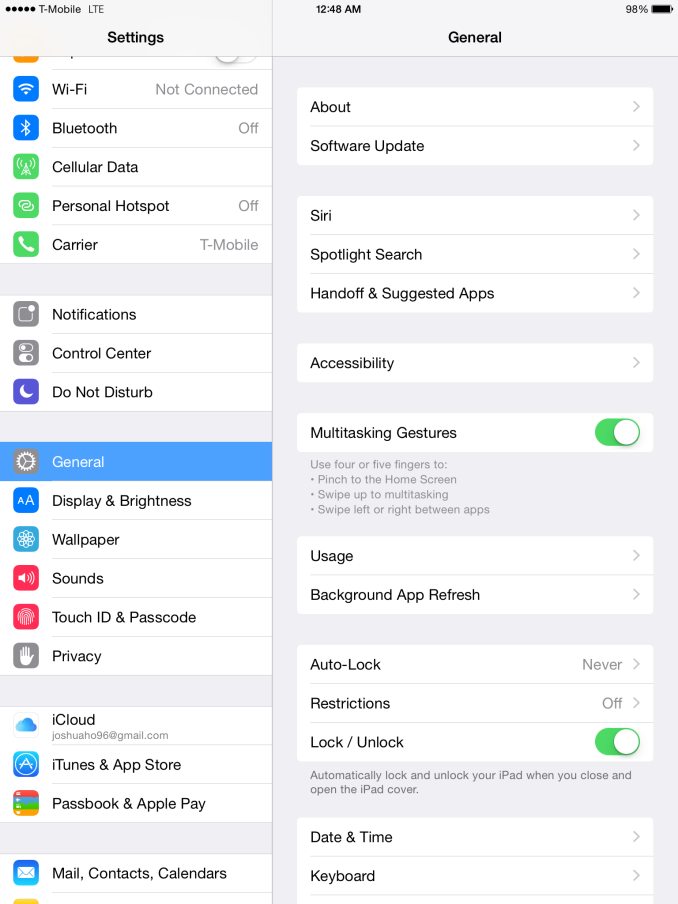
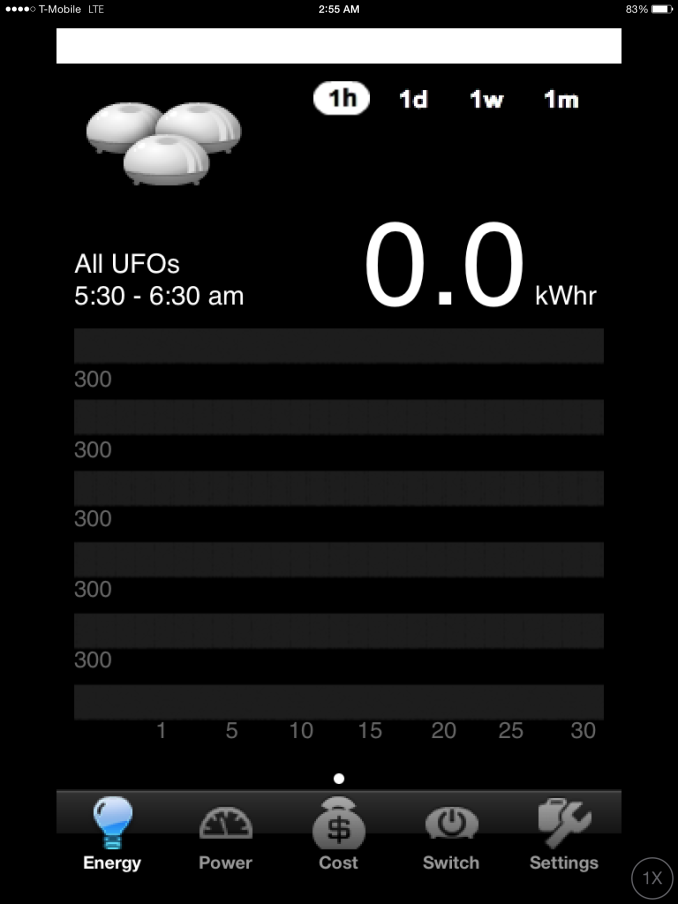
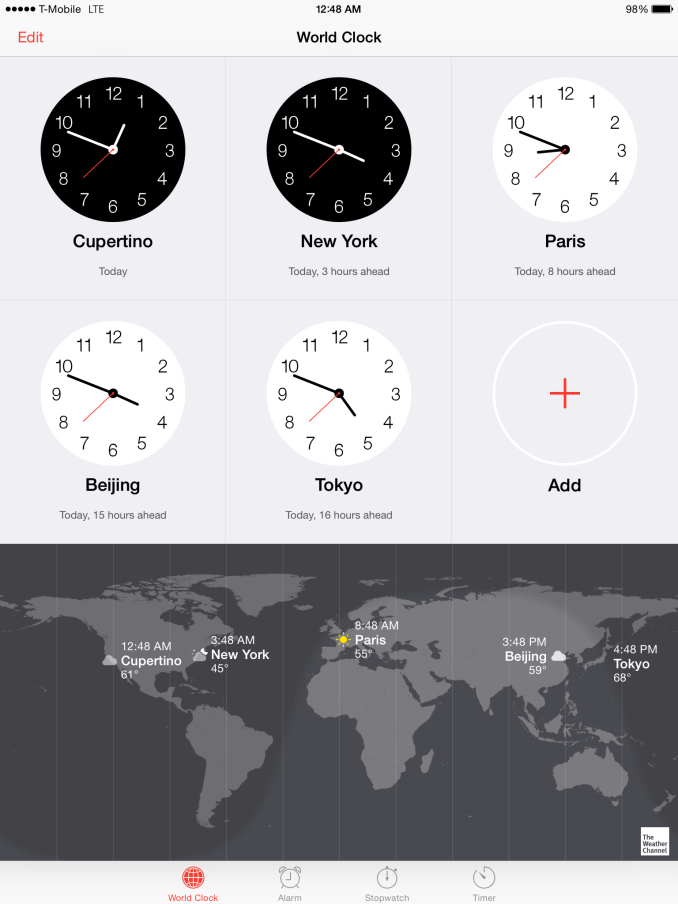
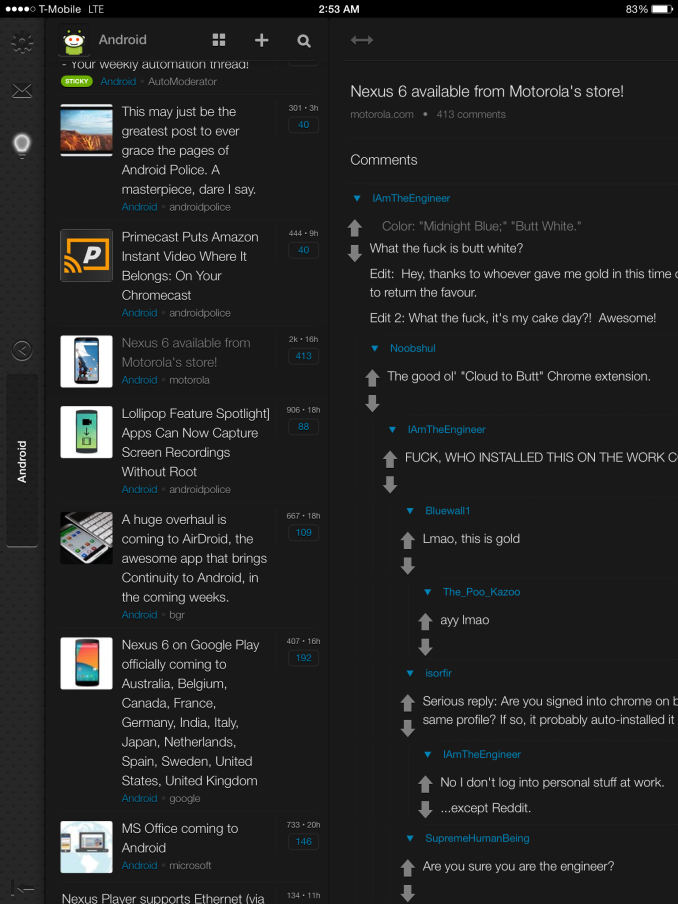

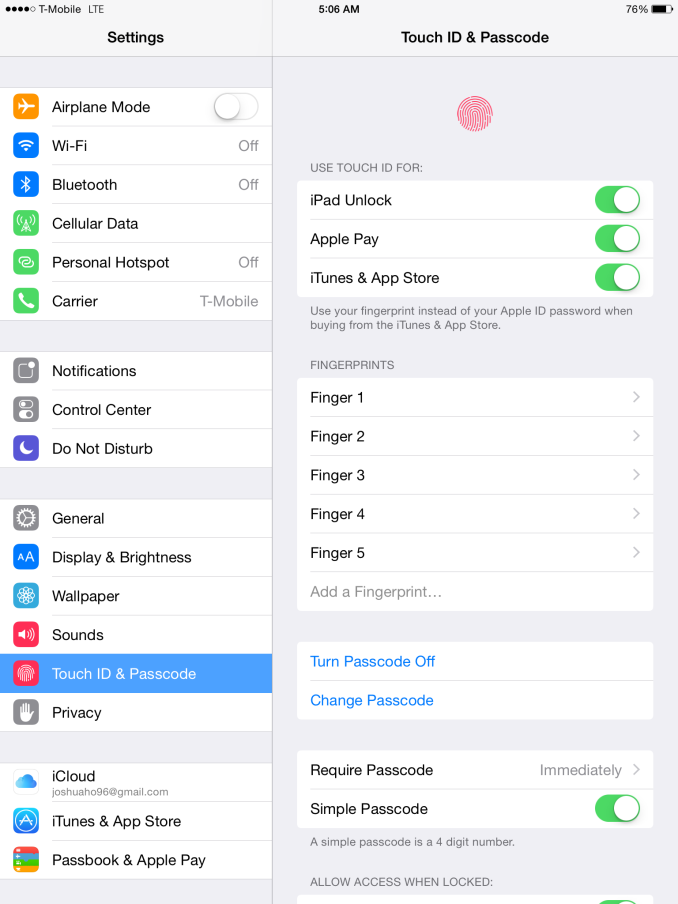








226 Comments
View All Comments
DosOldie - Sunday, November 9, 2014 - link
I still have an iPad 2 and I do not plan on upgrading my iPad until there is add on space. Put in a usable SD slot and I' ll upgrade. Adding & deleting apps will not change w a new iPad w the same amt of space.ws3 - Wednesday, November 12, 2014 - link
So you will never be upgrading...tralalalalalala40 - Thursday, November 13, 2014 - link
See the iStick... You see. everything is going wireless. They have wireless HDs from toshiba that are for the iPad now. You don't need a random dust collecting/battery dwindling port to get done what you want to get done.sdagley - Monday, November 10, 2014 - link
The line "I’m not necessarily sold on TouchID on a tablet as an ergonomic ideal as the sheer width of the device makes it a bit harder than usual to properly place my finger for scanning" in the Final Words section doesn't make sense. The TouchID sensor works with multiple fingers at any any orientation which makes it easy to use no matter how you're holding it. This review makes it sound like Apple uses the old style vertical swipe sensor like the Galaxy S5 usesLgFriess - Monday, November 10, 2014 - link
Just picked up an Air 2 over the weekend. I'm no Apple fan boy (PC gamer, Note 3 phone and don't think I'll ever go back to an iphone, and I generally despise itunes) , I just wanted what I thought would work best for me. After agonizing for months over every tablet out there including the Nexus 9, I just liked the Air 2.The cons (since that's what everybody seems interested in);
1. It's almost too thin. It feels delicate to me. I'd much rather have a bit thicker tablet with a more substantial feel. Stop with the thin thin thinner crap. Of course I have a case on the way but still.
2. The vibration. Yep it's definitely there. However, I can't think of any situation that this would bother me in the least bit. I wouldn't have thought to mention it but I saw so many comments here saying it's worse then ebola. There is no way somebodies fingers are going numb when holding it. People are starting to make up things to enforce their argument. The vibration certainly goes back to problem 1. Too thin, too light, too delicate in the hand.
3. Speakers. Not that I'm expecting anything great on a tablet but I sure like the thought of the Nexus front facing speakers. It's just a better solution. The ipad speakers aren't bad at all. They're just typical tablet speakers.
All in all, it's been a great addition. Fast, smooth, great apps (just tried Hearthstone for the first time, and as a PC gamer, I'd say it makes a great tablet game which I generally can't stand), display is gorgeous, battery life is longer then expected though gaming will eat it up quickly. The fingerprint ID thing IS nice, which surprises me as I wouldn't have thought I would care.
Very happy with my purchase.
LgFriess - Monday, November 10, 2014 - link
One other thing. There is absolutely NO distortion just holding the tablet. Another instance of over dramatization. I've put a little pressure into the back and didn't notice any distortion in that case either, but as I've said above, I do feel it's too thin/delicate and I'm afraid I'll damage it if I were to squeeze it too much. By "too much" I mean actively trying to bend it to see if the screen will distort, but not under normal use.tralalalalalala40 - Thursday, November 13, 2014 - link
When I pile-drive my LCD monitors at work they distort so I took them back.yhselp - Monday, November 10, 2014 - link
It's worth mentioning that this is the first handheld device (apart from full-fledged Windows tablets) truly close to last-gen gaming consoles in terms of performance - 25.6 GB/s memory bandwidth and a powerful triple-core CPU. It'd be interesting to see how the 1.5 GHz enhanced Cyclone stacks against the 3.2 GHz PowerPC in the Xbox 360.spammy39 - Tuesday, November 11, 2014 - link
Is there any reason why Anandtech does not include the Surface Pro 3 on the benchmark list?Fairshare - Wednesday, November 12, 2014 - link
Do you see any Intel Core based tablets here? The Surface Pro 3 is a PC that just happens to be a tablet so it's not really comparable in terms of performance. You might compare other statistics such as battery, display etc. but it's otherwise a completely different animal.